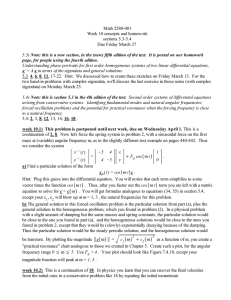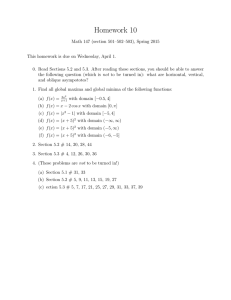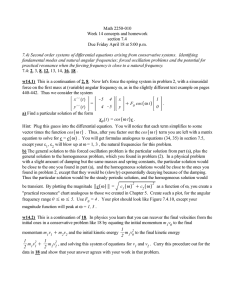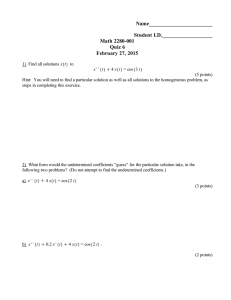Math 2280-001 Week 11 concepts and homework sections 5.4-5.5
advertisement
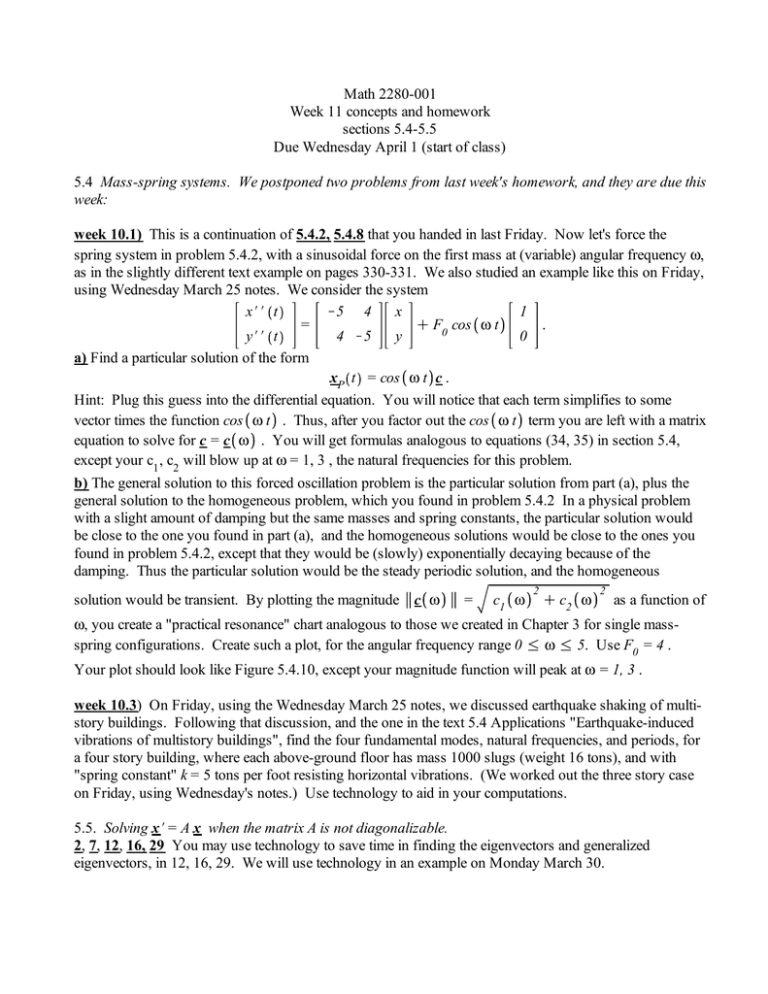
Math 2280-001 Week 11 concepts and homework sections 5.4-5.5 Due Wednesday April 1 (start of class) 5.4 Mass-spring systems. We postponed two problems from last week's homework, and they are due this week: week 10.1) This is a continuation of 5.4.2, 5.4.8 that you handed in last Friday. Now let's force the spring system in problem 5.4.2, with a sinusoidal force on the first mass at (variable) angular frequency w, as in the slightly different text example on pages 330-331. We also studied an example like this on Friday, using Wednesday March 25 notes. We consider the system x## t K5 4 x 1 = C F0 cos w t . y## t 4 K5 y 0 a) Find a particular solution of the form xP t = cos w t c . Hint: Plug this guess into the differential equation. You will notice that each term simplifies to some vector times the function cos w t . Thus, after you factor out the cos w t term you are left with a matrix equation to solve for c = c w . You will get formulas analogous to equations (34, 35) in section 5.4, except your c1 , c2 will blow up at w = 1, 3 , the natural frequencies for this problem. b) The general solution to this forced oscillation problem is the particular solution from part (a), plus the general solution to the homogeneous problem, which you found in problem 5.4.2 In a physical problem with a slight amount of damping but the same masses and spring constants, the particular solution would be close to the one you found in part (a), and the homogeneous solutions would be close to the ones you found in problem 5.4.2, except that they would be (slowly) exponentially decaying because of the damping. Thus the particular solution would be the steady periodic solution, and the homogeneous solution would be transient. By plotting the magnitude c w = c1 w 2 C c2 w 2 as a function of w, you create a "practical resonance" chart analogous to those we created in Chapter 3 for single massspring configurations. Create such a plot, for the angular frequency range 0 % w % 5. Use F0 = 4 . Your plot should look like Figure 5.4.10, except your magnitude function will peak at w = 1, 3 . week 10.3) On Friday, using the Wednesday March 25 notes, we discussed earthquake shaking of multistory buildings. Following that discussion, and the one in the text 5.4 Applications "Earthquake-induced vibrations of multistory buildings", find the four fundamental modes, natural frequencies, and periods, for a four story building, where each above-ground floor has mass 1000 slugs (weight 16 tons), and with "spring constant" k = 5 tons per foot resisting horizontal vibrations. (We worked out the three story case on Friday, using Wednesday's notes.) Use technology to aid in your computations. 5.5. Solving x#= A x when the matrix A is not diagonalizable. 2, 7, 12, 16, 29 You may use technology to save time in finding the eigenvectors and generalized eigenvectors, in 12, 16, 29. We will use technology in an example on Monday March 30.
